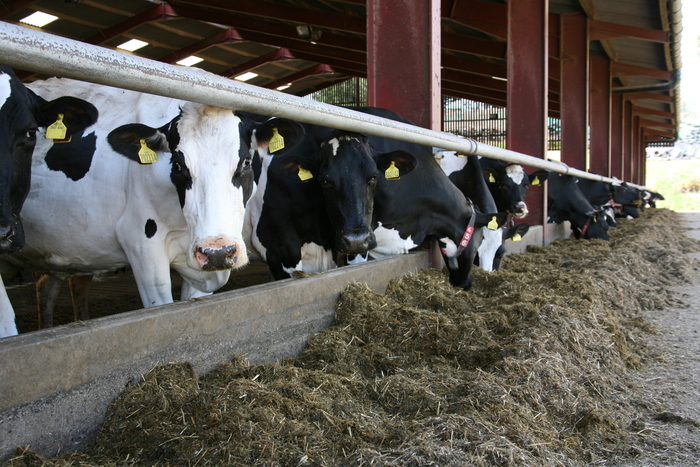With over 650 samples now analysed, Trouw Nutrition GB say the picture for first cuts has been influenced by cutting date, suggesting some specific challenges and opportunities.
Commenting on the results of crops analysed so far this year, Dr Liz Homer, Ruminant Technical Development Manager says that samples have been received considerably earlier this year, reflecting both the growing season and a swing towards multicut production systems.
“The season is roughly two weeks ahead of 2018, with the first samples arriving in late April. Numbers dropped back during June,” she explains. “The good weather and better early growth will have contributed to this and we know more farmers have opted for more cuts, bringing the date of first cut forward.”
Dr Homer says the very early samples were well fermented but characterised by higher NDF and lignin compared to the general dataset, an indicator of a higher proportion of more mature grass. This will affect how these silages will feed as they will be less fermentable.
Overall she says first cuts analysed so far are well fermented with higher dry matters, a result of optimal harvesting conditions. At the same time, sugar content is higher.
“While dry matter is higher at 34.1% compared to 31.2% last season, lactic acid is lower which is what we would expect with a drier crop. There is a significant range in lactic acid content, indicating some poorer fermented crops compared to the average.
“Farmers should be aware that a combination of higher dry matter and increased sugars are indicators of a greater risk of heating when clamps are opened, particularly if clamps were not adequately consolidated which is an added risk with drier crops.”
Looking at the nutritional analysis (see table), Dr Homer says that average ME content is higher at 11.5MJ/kgDM. Crude protein is marginally lower at 15.4%. However, a concern is that while NDF content is similar to 2018, lignin content is elevated.
“This is indicative of the rapid growth at the start of the season resulting in a more mature crop despite an earlier harvest. The consequence is that this will affect how silages will perform in the rumen.
“The combination of increased dry matter and lignin means that both rapidly and slowly fermentable carbohydrates are lower than in 2018. Overall, fermentable carbohydrate averages are low when compared to fermentable protein. This means that there is an excess of rumen fermentable protein which could impact on rumen balance in the total diet.
“To balance this, it may be necessary to increase the proportion of rapidly fermentable energy sources in supplementary feeds, possibly feeding more cereals to optimise rumen energy and microbial protein levels.
“The good news is that we are seeing lower acid loads than in 2018 and are generally seeing a higher fibre index than last year. Together these mean it should be possible to formulate diets containing more cereals safely, without increasing the acidosis risk.”
Dr Homer says the overall picture is that the average silage has a Dynamic Energy content down from 6.7MJ/kgDM to 6.2MJ/kgDM. While this still indicates a good energy level, the reduced fermentability could affect milk production potential. A cow eating 10kgDM/day would be expected to produce M+8.1 litres from silage provided the total diet is correctly balanced in terms of rapidly and slowly fermentable carbohydrate and protein.
”Encouragingly we are seeing higher intake potential, up from 97.3g/kg metabolic liveweight in 2018 to 106.4g/kg metabolic liveweight this year. This means cows should be enthusiastic about eating higher quantities which could be good news given that in many parts of the country first and second cuts have been good, and with some heavy third cut crops in the field farmers may be able to increase the proportion of grass silage in the diet this winter.
“As in any other year, the average masks a considerable variation in actual crops. While they indicate a trend, they cannot take the place of regular analysis of the clamps on the farm.
“We strongly advise having a representative sample from every clamp being fed analysed monthly with the diet fine –tuned to reflect both forage quality and quantity, ensuring diets are correctly balanced to optimise the contribution from forage and overall production and rumen health.”


